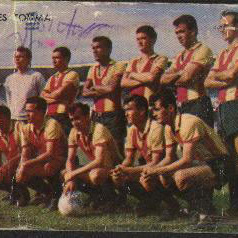I’m always impressed how this point is usually happily ignored in the US. You had a sane public transport network ffs. You destroyed it on purpose to now pretend it’s not possible.
deleted by creator
I was driving out to a job site in Montréal this week. On Wellington Street, within the Griffintown neighborhood, a street that was redone less than a year ago is already cratered to the point that tram tracks were poking out; I believe they were killed in the 60’s.
That story again: Montréal traffic so heavy it’s self excavating public transit.
deleted by creator
I think I’ve seen some old tram tracks poking through some potholes on Rue de la Gauchetière also.
Indeed there was so much bulldozing that you have to remind people that American cities were not in fact bombed out during World War II, we did that to ourselves
In my city museum (itself located in a former passenger train terminal) there is a 1/64 scale model of the city from the 1930s-40s, complete with the full streetcar system with trains that run. Every time I go there, it fills me with rage at what was destroyed.
It’s so depressing. Our city in Australia had such a good robust tram network and they ripped it all out because they hired an American urban planner that promoted cars is the future. Now instead we have a long car tunnel named after the Lord Mayor that was responsible for it.
Brisbane! Largest act of public vandalism in history, pretty sure it was the largest tram network in the southern hemisphere
in the southern hemisphere
On a side note: I’m always amused by grand claims that get ever more specific.
“the largest in the southern hemisphere’s third biggest metropolis that has a giant guitar with at least three strings and a large pineapple”
Remember to ask demand grade separate transit, folks!
Fyi: ~~ask~~ ⟶
askWeird it renders right on my app/device. Good to know!
I’ve always read that freeways are too steep and turns too sharp for rail, but Brightline says newer European trains are light and powerful enough to make it up the Cajon Pass in the median of the 15, so let’s stop screwing around with a single track for trains in the median. Just take the leftmost lane in each direction. Most of the cost is right-of-way acquisition; let’s use the one we already have. It’ll be better than nothing.
The interstate standard max grade is 6% and that’s only used when there’s no other option over mountains. The limit for standard passenger trains seems yo be 4-5%. So it’s not that different, the vast majority of the interstate corridor could support passenger trains. Not freight trains through, those need a much gentler grade.
The US has essentially built a railway network with the interstates, it’s just paved over and less efficient.
Also for the extreme cases, don’t forget cog railways. The steepest one is Pilatus railway with maximum gradient of 48%. Good luck trying something like that with a car.
We have light rail in Denver, but it’s not really the same as a streetcar system. Buses aren’t, either. Imagine if I could just walk to the grocery store without running a gauntlet of trucks and commuters. The unfortunate thing with where I lived was the light rail station was on the other side of one of the most ridiculously pedestrian-hostile intersections I’ve ever seen. I guess I could take an Uber there…
Imagine if I could just walk to the grocery store without running a gauntlet of trucks and commuters
This is half zoning, and half road design.
Too many areas in the US micromanage the built environment and force people to live unwalkably far from stores instead of having mixed-use zoning.
And then we have roads that are designed around the idea that the only people who matter are in cars.
I think I was dealing with one of those situations where racist/classist people in the 60s built highways to separate areas of town. There were small Asian and Central American grocery stores near me, where I had to cross 1 or 0 large roads… but the wealthier, mainly white area of town, with the Post Office and bar district, Safeway and Natural Grocers etc? Good luck. Good news is they’re currently redesigning it. For anyone familiar, I mean the interchange of I-25, Santa Fe and Alameda in Denver.
Denver also had a street car network until the 1950s. There are still spots around downtown where you can still see the trails poking through the asphalt. They didn’t even rip up the old rails. They just paved over them.
I used to live in a city in the northern Midwest that like many others had a street car network, until they took them out in the 30s for the usual bullshit “sell more cars” reasons. You could still go to a city lot and see the old street cars laying around, junked out. Such a regressive waste.
Traffic, pollution, and the cost of owning a vehicle wouldn’t be such big factors in day-to-day life. I’m sometimes floored at average commute times, it adds up to years of your life spent sitting in traffic. Not to mention car accidents.
What’s a streetcar? A tram?
Yepppp
Think electric busses, on rail tracks imbedded in the street.
Yeap that’s a tram.
I saw a stat going around a couple years ago that back at the streetcar peak, you could travel from like NYC to Madison,WI entirely by street car (I’m paraphrasing; can’t remember the exact cities.) Does anyone know the stat I’m talking about? Would love to find the source
Come to Melbourne, Australia. We have trams .
Removed by mod












